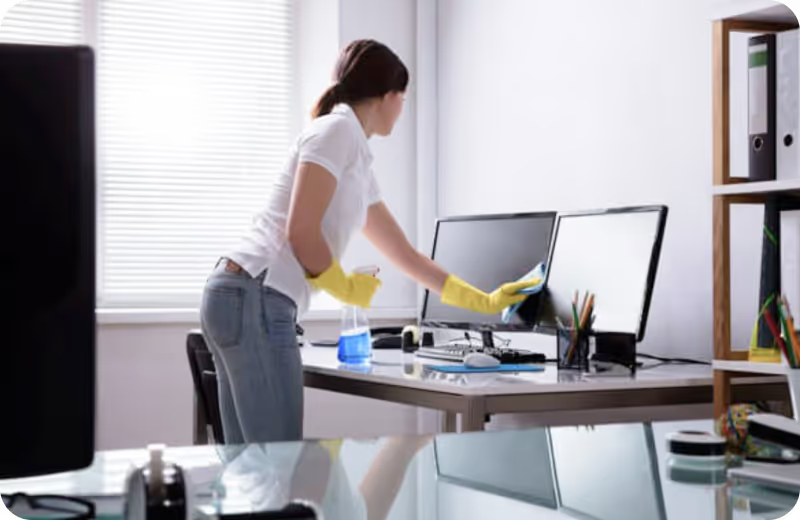
Shoes can come in multiple different materials from leather shoes to suede shoes. For the majority of these, we don't typically wash shoes. However, sweat, spills, and humidity can still penetrate the porous parts of shoes, which can be the start of mold growing on the surface.
Is shoe mold dangerous? Moldy shoes are not only eyesores, they can harbor bacteria and fungi that can infect your feet as you use the shoes. Moldy shoes can also spread mold spores to other areas of your home, even if you store the shoes in a closet. It is essential to remove and prevent mold growth on shoes.
What Causes Mold Growth on Shoes?
Mold growth is often accompanied by moisture. When shoes are stored while damp, mold spores can settle in the nooks and crannies of your shoes, eventually growing into colonies. Moisture comes from washing shoes, and not giving them enough time to dry before storing them. The dark, damp closet is the perfect environment for shoe mold.
Alternatively, mold growth can also happen when the shoes are moist from sweat, and stored improperly while still damp. Mold feeds off organic material too, which makes sweat the perfect medium for mold colonies to thrive in.
How to Remove Mold from Shoes
If you notice a musty smell emitting from your shoes, you most likely have mold and mildew growing inside it. A good way to remove mold from shoes is to spray vinegar on them. Let the vinegar kill mold spores for at least 30 minutes, then wash or let the shoe air dry as normal.
Removing mold is different for suede and nubuck shoes. Suede is not waterproof, and may get damaged when left damp too long. Instead of using vinegar, lightly spray the shoes with rubbing alcohol, then wipe with a dry cloth. Alcohol should kill mold on contact.
How to Prevent Molds on Shoes Inside the Closet
Once mold has latched onto your shoes, the material will easily start deteriorating even after you've killed off the mold. For small patches of mold, your shoes will most likely be fine, but shoes that are covered in mold might not survive as well. It is important to prevent mold spores from growing colonies in your shoes in the first place!
Method #1: Use Silica Gel Packs
Silica gel packs are good for two reasons: they prevent mold on shoes by absorbing excessive moisture around them, and they deodorize any musty smells and foul odors from shoes. Consider purchasing silica gel packets in bulk, and distributing a couple of packets in and around your shoes to keep them dry while in storage.
Method #2: Store with Dry Tea Bags
Dry tea bags work similarly to silica gel packets in that they absorb the excess moisture in the air surrounding them. Place a couple of dry tea bags into your shoes, and store them with tea bags scattered around. You may need to change the tea bags frequently, however, as the leaves may attract pests, and can be a source of mold when damp.
Method #3: Completely Dry Shoes Before Storing
After using or washing your shoes, allow the shoes to air dry in a well-ventilated area, or directly under the sun. This will prevent mold on shoes as you store the shoes in your closet. You may use a hair dryer on the low heat setting to hasten the drying process, but this is often unnecessary as the shoes would quickly dry on their own during hot weather.
Method #4: Store Shoes Dry in Canvas or Mesh Bags
Forego storing your shoes in a plastic bag, and instead use canvas or mesh bags. Plastic bags tend to keep moisture in, which will allow mold to grow on your shoes. Go for mesh, fabric, or cotton bags that allow for better air circulation, and prevent moisture buildup around your shoes.
You may have already gotten fabric bags with your shoes when you first bought them, which is used to safely store the shoes when not in use. However, you may also use a mesh laundry bag, a cotton fabric bag, a clean cloth bag, or even brown paper bags to store your shoes and keep them dry.
Method #5: Waterproof Shoes
A good way to keep nubuck and suede shoes clean is to waterproof them while they're clean and dry. Give your shoes a good amount of waterproofing spray, and let dry. Use a leather conditioner on leather shoes. You should be able to prevent mold from growing on your shoes. If water or any liquid spills on your shoes, you can easily wipe them away with a clean cloth.
Method #6: Clean Shoes Regularly
Our last tip is to clean your shoes regularly. Even without washing, you need to clean your shoes often to prevent mold on shoes. You can dry clean shoes with baking soda to get rid of surface dust, or keep a spray bottle of diluted vinegar on hand to spot clean stains away.
Pick up the phone and call Luce when you're too busy to handle those cleaning responsibilities, and we'll talk with you about a home cleaning plan that works for you!


























